What kind of bike are you after?
Looking for the perfect bike but not sure where to start? Don’t worry, the numbers of options can be overwhelming, and that’s exactly what we’re here to help with. Hit the image below to contact our Concierge Team if you'd like us to do the legwork for you, or simply follow these five steps to help you zone in on that perfect bike.
Step 1 – Determine What Type of Riding You Will be Doing
Every bike is perfectly designed for a specific style of cycling, so the first step in choosing the right bike is to decide what type of riding you want to be doing.
Do you want to ride on the road in a group? Perhaps you're seeking a bike to use as transportation? Want to tackle the trails at your local mountain bike park? Looking to get healthy and spin laps in the park? Simply want to pop down to the local cafe in style? Or are you just seeking a bike to ride with the kids? Assessing what you want to do will quickly set you in the right direction.
Step 2 – Where to Buy From
Knowing what type of cycling you're looking to do will be a big decider on narrowing down your purchase points. If you're looking to do regular cycling then a specialist bike store is likely the best option. There are also some online retailers who specialise in quality bicycles, but you'll need some basic knowledge to ensure you get the right size and have it set up correctly.
If your budget is a little more restricted, then there are plenty of options out there for a cheap bicycle. You may find a good deal at general sporting goods shops and buying used is also an option. BikeExchange has hundreds of quality used bikes advertised, but if you’re unsure on where to start, read our brief guide to buying a cheap or used bike for some pointers before getting your search underway.
Step 3 – Establish a Price Point
It's important to work out how much you want to spend on your bike. Specialist mountain and road bikes typically start at around AU$1,000, with many costing far more. More budget options may start from as little as AU$200, but it's crucial to consider that you do get what you pay for. Using BikeExchange will give a clear idea of what type of bike is within your price point. Don't forget to budget for additional parts and accessories that you may need.
Step 4 – Sizing Up
Finding the correct bike size is paramount to comfortable and confident cycling. With many bike types available in five or more sizes, there should be no guesswork. An incorrectly-sized bike can make for awkward or uncomfortable riding and could be unsafe too.
Based on a number of factors including height, inseam length, riding experience, and flexibility, determining the right size bike is something that often requires experience. If buying from your local bike store, this is something they will help you with. Once a correct bike size is chosen, ensure it's correctly fitted and adjusted for you. The most common adjustment is saddle height, however, handlebar height and reach to the handlebars may need to be fine tuned too.
Step 5 – Parts and Accessories
Once you’ve determined the right bike for you, it’s then time to consider parts and/or accessories. Often a bike is sold only with the parts required to ride it and nothing more. It’s up to you to decide on what you want to add to the bike. Some common additions include cages (holders) for water bottles, lights, pump, lock, cycle computer and a different saddle or pedals.
In Australia, a helmet is required by law, and other accessories such as gloves or padded bike shorts can greatly enhance your cycling experience.
Types of Bikes
Now to take a look at the different types of bikes on the market and the sort of cycling they deliver.
Road Bikes
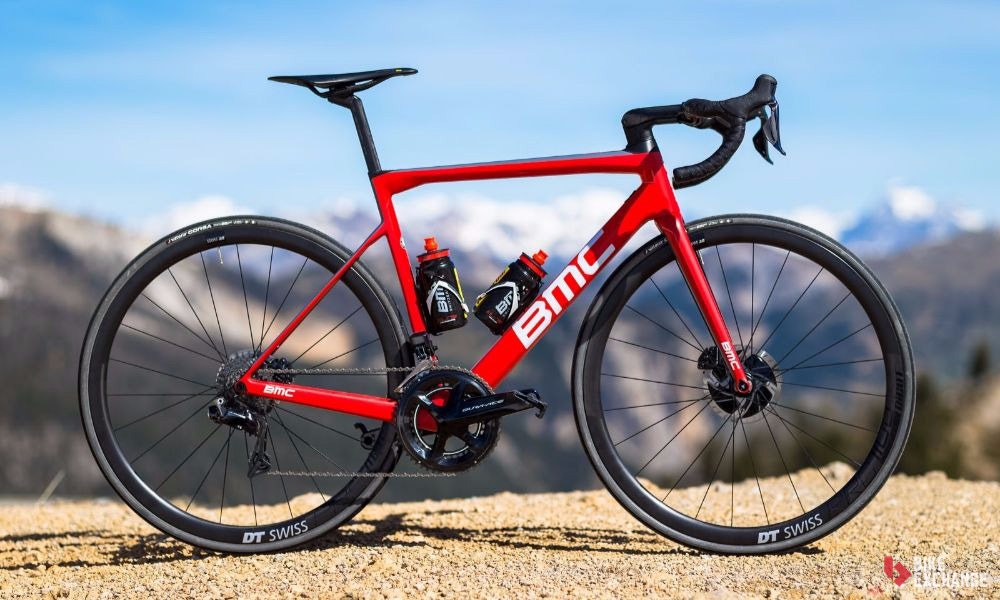
Designed for use on sealed roads, road bikes are one of the most efficient bicycles. Road bikes can be spotted by the skinny tyres and 'drop' handlebar that curls back toward the rider at the bottom. There are multiple types of road bikes, but they will typically fit into one of two categories: competition or endurance.
Competition bikes are built with speed in mind. They typically feature harder gears, stiffer frames and a more aggressive position to keep you out of the wind.
Endurance bikes can come in many forms but typically feature slightly more upright riding positions, easier gearing and a smoother ride. They're best picked for more social and fitness-based road cycling. Most brands will sell more endurance road bikes than competition models.
To learn more about these fast bikes, head on over to the blog to see our comprehensive guide to buying a road bike.
Triathlon & Time-trial Bikes
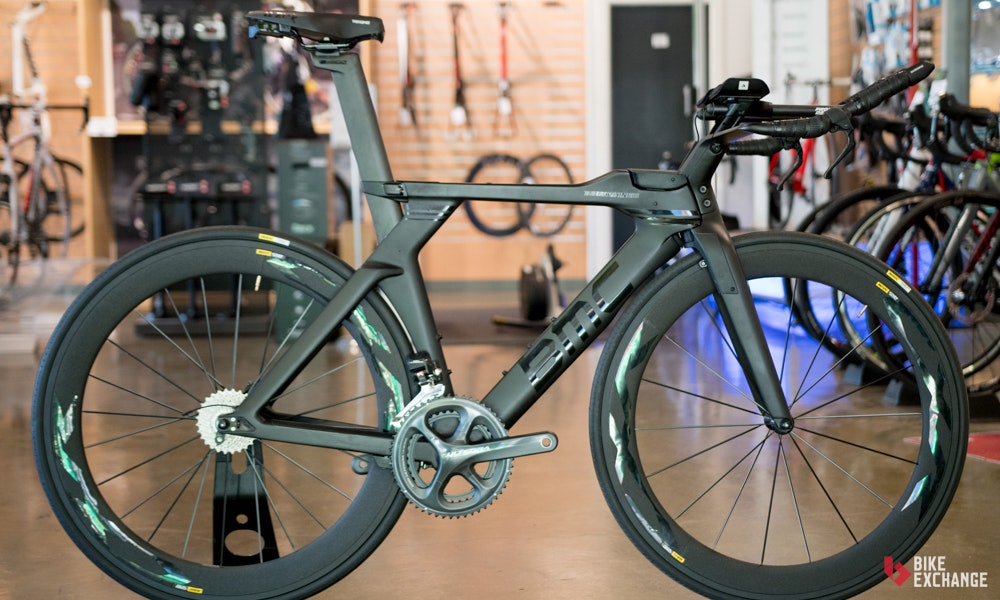
Triathlon/Time Trial bikes are designed for competition and not recreational purposes. They are focused on aerodynamics which makes them the fastest road bike in a straight line and against the clock. Such speed comes at the expense of handling and long-distance comfort. Designed for good quality sealed roads only, this type of bike is best ridden/raced alone or in small groups due to the pointed and narrow handlebar position that doesn't lend itself to agility or fast braking.
Many who own this type of bike will also own a road bike for training and social purposes. To learn more about these wind-cheating bikes, check out our comprehensive guide to buying a triathlon bike for more information.
Flat Bar Road Bikes

Flat Bar Road bikes combine the flat handlebar position of a mountain bike with the speed of a road bike. Due to the more upright riding position, flat bar road bikes are not as fast as traditional road bikes but offer a more upright riding position and greater visibility in traffic. This type of bike is a popular choice for commuting to work and general fitness cycling. They're best kept to sealed roads, although some flat bar road bikes offer wider tyres that can handle light gravel use too. To read more, check out our guide comparing flat bar road, urban and hybrid bikes to learn more.
Mountain Bikes

Arguably no category of bicycle offers you more choice than mountain biking. While choice is a good thing, it can also be overwhelming. If you're set on wanting to ride off-road, then read our complete guide to mountain bikes.
Choosing a mountain bike will come down to the type of terrain you want to ride, whether you're looking to compete and your current ability. Suspension is a common theme on mountain bikes, with more suspension provided as the terrain becomes more difficult.
The suspension commonly dictates the name of the mountain bike too. Mountain bikes with no suspension are referred to as 'rigid'. Mountain bikes with front suspension are called 'hardtails' as the rear is rigid. And bikes with suspension at both the front and rear wheels are called either full suspension or dual suspension bikes.
Cyclocross
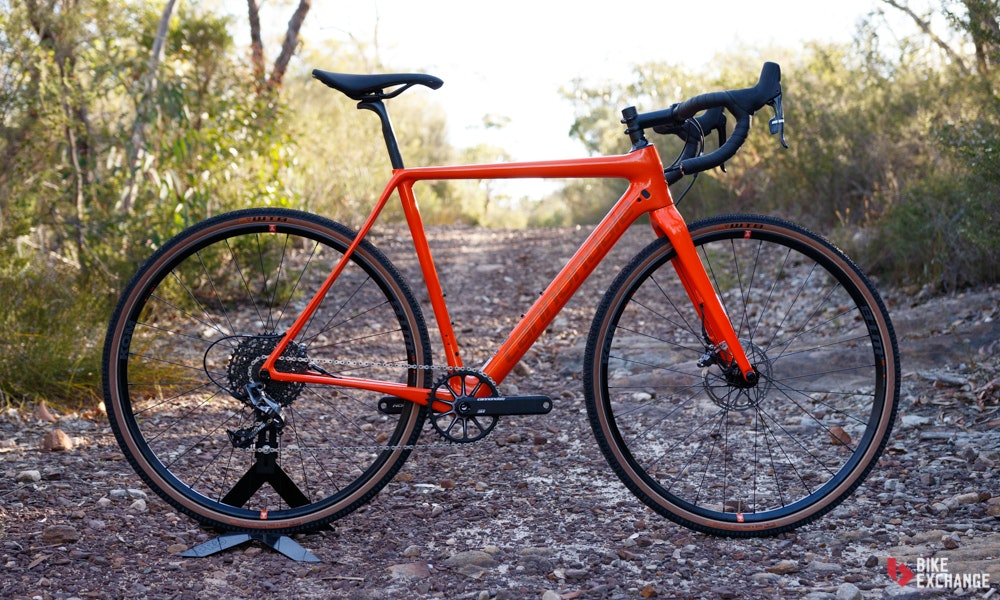
Cyclocross bikes are built for the sport of cyclocross. This sport originated in Europe as a way for road cycling racers to stay fit in the winter, however, has since grown globally to be a loved form of bicycle racing. Cyclocross bikes look much like road bikes but instead feature wider treaded tyres and lower gearing. Both the frame and brakes are designed to allow room for deep mud.
Given their designated usage, cyclocross bikes sit in the middle between a road bike and mountain bike. This makes them an excellent choice for not just cyclocross racing, but also for gravel riding, adventure cycling, and commuting. If you're wanting to try out this new cycling discipline, then read our complete guide to cyclocross bikes.
Gravel Bikes

Gravel bikes, sometimes also referred to as adventure bikes, are essentially road bikes designed to tackle a variety of surfaces, sometimes carrying additional gear and are suitable for all-day riding on roads less travelled.
The versatility of gravel bikes makes them a great option for multiple cycling pursuits. They are suitable for all but the fastest of road riding, while the wider tyres and wider-range gearing make off-road trails, gravel and fire roads manageable. They are robust, comfortable and often can carry luggage making them ideal for light touring adventures or for those longer and faster commutes. To learn more about these capable bikes, check out our brief guide to gravel bikes.
Urban Bikes

The urban category is a tough one to describe and covers all types of bikes designed around transport in an urban environment. These bikes are typically designed for efficient transport over short to medium length distances.
Many urban bikes offer greater strength compared to lighter flat bar road bikes in order to handle the rigours of jumping off curbs and riding poor surfaces. Some urban bikes are designed with security in mind, offering theft-proof wheels, easy lock carrying and stealthy paintwork.
Others go in an opposite direction, grabbing influence from Dutch bicycles with classic styling and timeless colours. These are also known as 'Classic' or 'Vintage' bikes, read more on these below.
Hybrid Bikes

Also commonly known as a “comfort” or “fitness” bike, hybrids typically offer one of the most upright riding positions available. Hybrids originally got their name for being somewhere between a road and mountain bike, but modern-day hybrids are perhaps best classified as recreational fitness bikes. If you want to leisurely and comfortably ride on sealed or well-kept gravel surfaces without any speed or performance pursuits, then a hybrid may be right for you.
While many hybrids don't offer suspension, some will offer suspension at both the front wheel and below the saddle. These types of bikes are perfect for those looking to take up cycling who suffer from chronic neck or back pain.
Folding Bikes
Perfect for those limited on storage space or wanting to use a bike in addition to bus and train travel. As the name suggests, a folding bike can be collapsed for compact storage and portability.
Most folding bikes feature limited gearing and smaller wheels, which means they are best used for shorter town trips on smooth surfaces. The smaller wheels and the smaller bike, in general, will typically be less stable at speed.
BMX Bikes
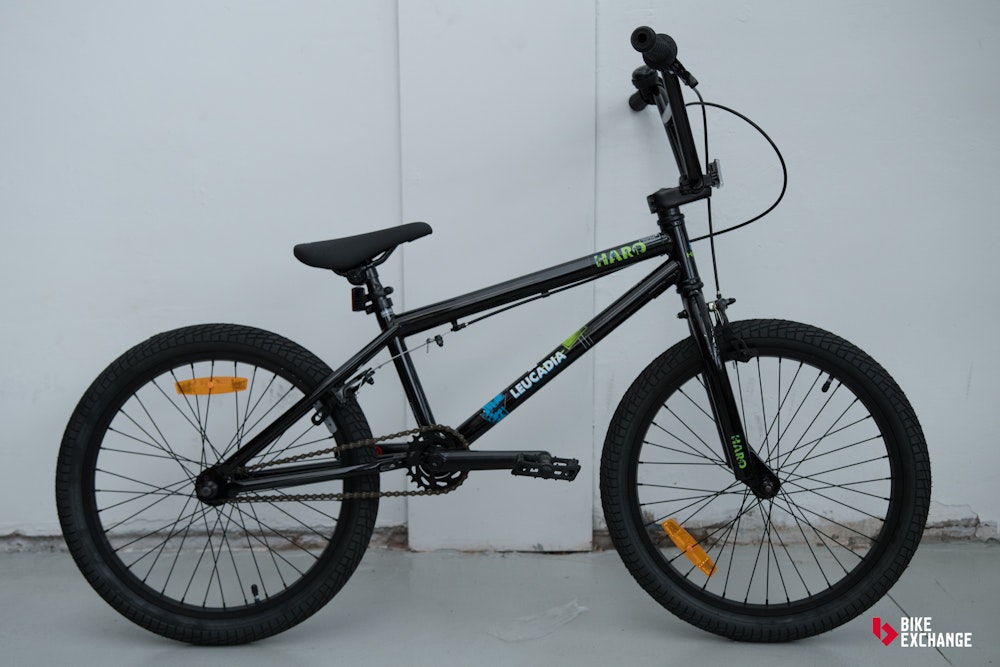
Standing for 'Bicycle Motor Cross', BMX bikes are typically built for fun. There are three major types of BMX bikes, each designed to suit a particular category - Jump, Race, and Freestyle. BMX bikes typically feature smaller 20in wheels, compact frames, and a single gear. BMX bikes are designed for minimal pedalling and short distance rides.
BMX Racing is an Olympic sport held on a purpose-built track. These bikes feature one gear, just a rear brake and are designed to be extremely stiff and lightweight.
Jump and Freestyle BMX's are both built with strength as a priority. Jump bikes are typically bare bones in design with as few parts as possible the break or cause injury to the rider. Freestyle bikes are typically designed for use within skate parks and can feature components designed specifically for performing stunts such as grinds and handlebar spins.
For more information on this action-packed category of bikes, check out our ultimate guide to buying a BMX bike
Touring Bikes
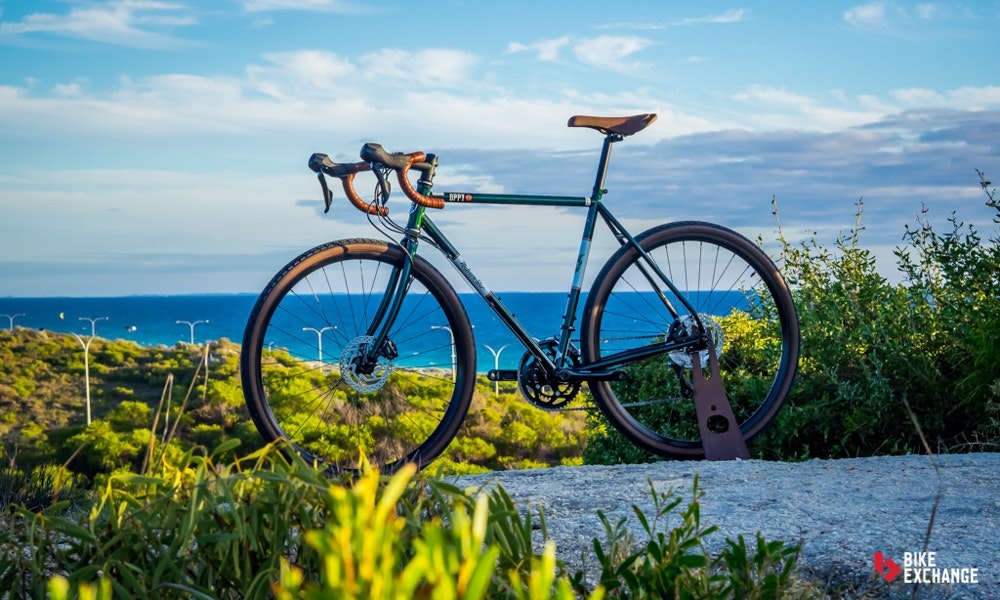
Touring bikes are the most desirable bike for multiple-day adventures as they are easy to use, reliable and strong enough to handle carrying large luggage loads. Touring bikes are known for their comfort and are capable of travelling on most terrain. Such strength typically comes at a weight penalty which makes the bike sluggish to ride, so best keep these for those true escapes.
For lighter, faster and shorter trips, check our gravel bikes above.
Fixie & Single Speed Bikes

Fixie and Single Speed bikes are great city bikes designed for cheap and reliable mobility. They are best suited to flatter urban roads as they have no gears and typically slick tyres. A fixie is short for 'fixed wheel', meaning the rear cog is directly connected to the rear wheel and doesn't allow for coasting - just like a track bike (below). Whereas a single speed bike features a rear cog with a 'freewheel' that allows for coasting.
Due to the lack of gears, these bikes are typically cheaper in price and offer high style points.
Track Bikes

Built for racing around a velodrome, Track bikes are required for track cycle racing. Track bikes feature no brakes and a fixed rear wheel which makes them illegal to use on the road. A 'Fixie' is actually just a track bike that has been altered for on-road use. For more information, we recently detailed track bike tech and how they differ from other bikes.
Cruiser Bikes
Cruiser bikes are known for their comfort - the seat, handlebars and the frame are all designed to make the rider feel as comfortable as possible for short distance rides. These bikes are not fast or efficient, but they look great and are extremely fun to ride. The cruiser bike is best suited for use on road or paved path riding and the main features are its large seats and high handlebars. Perfect for riding along the beach in style.
Classic and Vintage Bikes
A nod to the olden days, Classic and Vintage bikes are popular due to their classy styling and general ease of use. Many of these bikes are inspired by those ridden around the flat streets of Amsterdam and so either feature a few or no gears at all. The riding position is similar to that of a hybrid and is generally very comfortable for shorter rides.
Most of these bikes can be quite heavy and are constructed with steel frames, more expensive versions will be made of aluminium. Many Classic or Vintage bikes will include accessories to complete the look and utility of the bike, these can include pannier racks, front baskets, and a kickstand.
Electric and power assisted

Perhaps the fastest growing category of bicycle, E-bikes feature an electric motor for pedal assistance. E-Bikes can fall under multiple other bike categories including road and mountain, but the most popular category for E-bikes are for around town and commuting use. A proper E-bike works by providing motor assistance while the bike is pedalled, therefore providing help on the hills and flats.
In Australia, E-bikes are legally restricted to a 250W output with a top-speed of 25kph before the electric motor stops providing assistance. To learn more about this ever popular category, check out our ultimate guide to e-bikes.
Kids Bikes

Perfect for teaching little ones motor skills, balance and road manners, Kids bikes cover just about every category listed here. The most important factor to consider when looking for a kids bike is the tyre size. The best way to tell if the size is right is to have your child straddle the top bar of the bike while standing and observe whether he or she can plant both feet firmly on the ground.
With options available to suit children from 18 months through to their teenage years, the breadth of information surrounding kids bikes and what to look can seem overwhelming. Luckily the Blog team have you covered with our ultimate guide to buying a Kids Bike
We hope this information gives you a handy, overall understanding of the different types of bikes – and bike riding – out there. We always recommend heading to your local bike store and starting a chat with them. They are a wealth of knowledge and will be able to point you in the right direction to Buy or Sell a bike
Follow BikeExchange: Email | Facebook | Twitter | Instagram | YouTube









